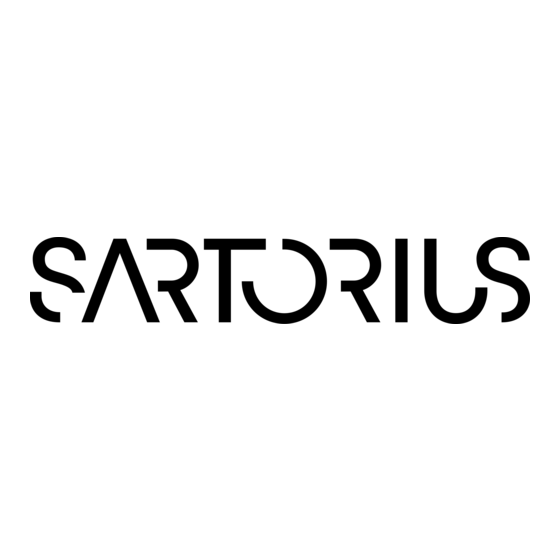
Summarization of Contents
Intended Use of Sartorius Interface
Interface Available Features
Explains the purpose and capabilities of the balance/scale interface for computer connectivity and control.
Configuring the Interface
Parameter Settings via Menu
Instructions on configuring interface parameters through the balance/scale menu.
Data Output Functions
Printing Data Records
Details on generating printouts of measured values and IDs for documentation purposes.
Data Output Features
Covers printing individual values, line format configuration, and automatic print options.
Examples of Data Records
Illustrates various data output formats, including with and without data ID codes.
Interface Description and Settings
Interface Description Details
Details factory settings for transmission rate, parity, stop bits, handshake, and protocol.
Data Output Format
Explains how to output measured values with or without data ID codes (16/22 characters).
Data Output Formats and Codes
16-Character Output Format
Describes character positions and codes for normal operation, special codes, and error codes.
22-Character Output Format
Details the format for data output including a 6-character ID code preceding the 16-character data.
ID Code Characters Meaning
Provides a table mapping ID code characters to their meanings for status and data types.
Data Input Format and Commands
Control Command Format
Specifies the format for control commands, including escape, command character, CR, and LF.
Command Character Definitions
Lists command characters and their corresponding meanings for controlling balance/scale functions.
Synchronization and Handshake
Data Communication Synchronization
Ensures error-free communication by matching parameters like baud rate, parity, and handshake.
Handshake Methods
Explains hardware (CTS/DTR) and software (XON/XOFF) handshake methods for data transfer.
Data Output Activation
Software Handshake Control
Details how software handshake is controlled via XON/XOFF signals for communication.
Activating Data Output
Options for activating data output: via print command or automatically with display.
Cabling and Pin Assignments
Cabling Diagram
Illustrates interface connections between balance/scale and PC using RS-232/V24 standard.
Pin Assignment Chart
Details pin assignments for D-Sub connectors (25-pin and 9-pin) used for interfacing.















Need help?
Do you have a question about the EB and is the answer not in the manual?
Questions and answers